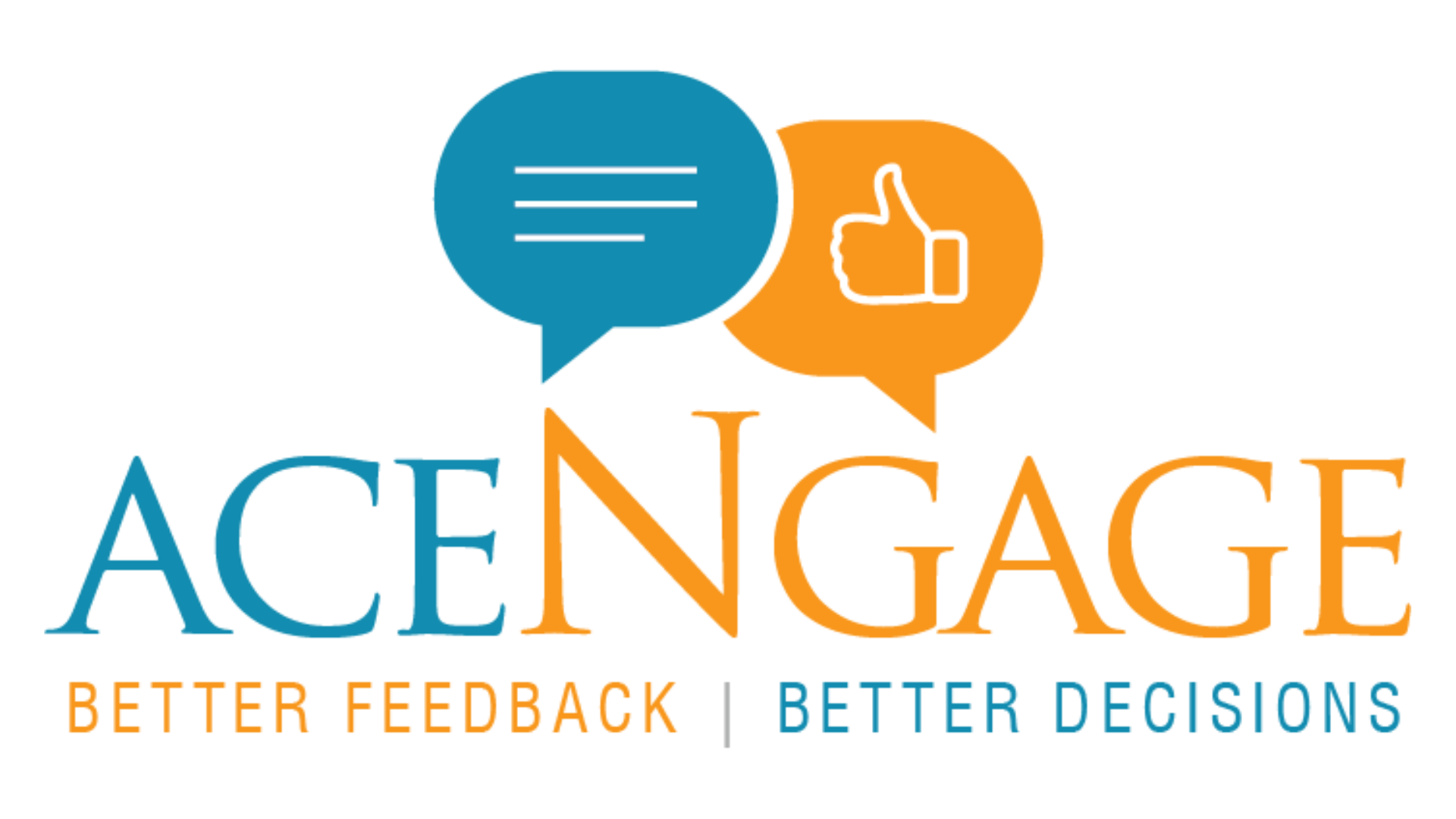[vc_row row_type=”row” text_align=”left”][vc_column][ultimate_spacer height=”20″][vc_column_text]Employee engagement is a vital component of a thriving and productive workforce. When employees are engaged, they are more committed to their work, more creative, and more likely to stay with their current employer. While traditional approaches to employee engagement have long been in place, innovative companies are exploring new and creative methods to boost employee engagement. In this blog, we will delve into some of these innovative approaches with Acengage, offering a comprehensive understanding of how they can enhance your organization’s performance.[/vc_column_text][ultimate_spacer height=”20″][vc_row_inner][vc_column_inner][vc_column_text]
Permit Workers to Set Their Own Schedules
Providing employees with flexible scheduling is the first and most forward-thinking strategy to enhance employee engagement. When employees, especially those in hybrid or work-from-home arrangements, are given greater autonomy over their schedules, they tend to be more interested and invested in their jobs. Providing workers with the flexibility to set their work schedules has improved morale and output. As a result, staff turnover may be lowered, and satisfaction levels increased. Giving workers some say over when they clock in and out might help them better balance their professional and personal commitments. In addition, it aids in optimizing the use of their time.[/vc_column_text][/vc_column_inner][/vc_row_inner][ultimate_spacer height=”20″][vc_row_inner][vc_column_inner][vc_column_text]
Promote Originality and Imagination.
In the business world, fresh ideas are gold. Motivating workers to think beyond the box is one way to keep them interested in their jobs. Discovering new, more effective methods is a terrific approach to improving productivity. Since employees would feel that they contributed to finding a solution and that their ideas were taken seriously, morale should improve as a result. Furthermore, it is conceivable that workers’ brains are opened by creativity and invention, allowing them to approach their work and its issues with greater candor and efficiency. You can do this by routinely providing opportunities for staff members to propose and implement novel approaches to vexing problems. Structured innovation procedures and initiatives are another option to consider.[/vc_column_text][/vc_column_inner][/vc_row_inner][ultimate_spacer height=”20″][vc_row_inner][vc_column_inner][vc_column_text]
Promote Collaboration Between Divisions
Motivating employees to work together across departments is another cutting-edge strategy for increasing participation. For an organization to succeed, it is crucial that all of its parts communicate with one another. Company-wide employee engagement is boosted by fostering friendships and cooperation amongst teams across the company. It’s feasible because fostering collaboration across departments boosts engagement across the board and ultimately improves the quality of life at your business. This can be accomplished by purposeful communication across departments like Human Resources, Information Technology, and Accounting. Training provided by management to assist these divisions in better grasping one other’s roles is also helpful.[/vc_column_text][/vc_column_inner][/vc_row_inner][ultimate_spacer height=”20″][vc_row_inner][vc_column_inner][vc_column_text]
Facilitate Workers’ Access to Information Regarding Organizational Shifts
If workers aren’t informed about organizational shifts, they won’t feel as invested in their jobs. Therefore, it is essential that workers receive accurate information about the changes that may affect them in the workplace. Workers who are given insight into the reasoning for organizational shifts report feeling more invested in their jobs as a result. Workers will be more prepared for changes that influence their jobs if they are informed in advance of the upcoming changes and kept abreast of workplace developments.
One way to do this is to discuss the implementation of workplace reforms openly. It’s also important to update workers with any new information that may affect them as soon as possible. Explain the situation and provide an explanation in a note, email, or posting on the bulletin board. It may also be useful to conduct a poll of employees to get their feedback on the modifications.[/vc_column_text][ultimate_spacer height=”20″][/vc_column_inner][/vc_row_inner][vc_row_inner][vc_column_inner][vc_column_text]
Solicit Comments from Workers
One of the most important variables in employees’ level of dedication is their opinions. Feedback from workers may help businesses zero in on what’s really getting workers excited about coming to work. They can also identify and address the causes of employee discontent. This is due to the fact that comments represent the “Voice” of the workforce. When it comes to figuring out what will keep people interested, nobody’s perspective is more valuable than their own.
There are several avenues open to employers who wish to get employee input. Some companies have staff fill out an online survey, while others prefer to hear suggestions in person or by email. Employees can provide feedback to their employers without worrying about repercussions if the mechanism is anonymous. It is also important for businesses to take employee comments into consideration. Employee disengagement might result from hearing their opinions ignored.[/vc_column_text][/vc_column_inner][/vc_row_inner][ultimate_spacer height=”20″][vc_row_inner][vc_column_inner][vc_column_text]
Incentivize and Reward Employees Depending on Their Output.
A more invested workforce produces better results. According to recent research, rewarding and incentivizing employees based on their productivity is one approach to increasing their enthusiasm for their work. Employees who were rewarded for their efforts based on their productivity were shown to be more invested in their jobs. Creativity and originality were also elevated within this group. They were also more inclined to say positive things about working for the firm. They were motivated to act in accordance with the rules by the reinforcements they received. Therefore, businesses can enhance employee engagement and output using awards and incentives based on productivity. Increased staff loyalty is another benefit for businesses.[/vc_column_text][ultimate_spacer height=”20″][vc_column_text]
Encourage Your Team Members to Work Together More Effectively.
When workers believe they are contributing to the success of the company, they are more likely to put up their best effort. Employee engagement services help in fostering a cooperative workplace. Coworker relationships will strengthen as a result of more staff collaboration. They’ll care more about their jobs and their coworkers.
There are a number of approaches you may use to encourage teamwork inside your organization. In order to succeed, it is essential that teams learn to work together. Motivate your staff to learn from one another and collaborate on new ideas. They will become more familiar and better equipped to work together as a result.[/vc_column_text][ultimate_spacer height=”20″][vc_column_text]
Create Opportunities for Staff Training and Growth
Through training and development, workers are given the tools they need to succeed at their occupations and advance in the organization. It’s essential to the success of any business since it raises morale and motivates workers. Employees who believe they have room to grow professionally are more invested in the success of the business.
Training programs for employees and incentives for personal growth may be created in a variety of ways. The most crucial component is ensuring that employee engagement programs are appropriate for the staff and the business.[/vc_column_text][ultimate_spacer height=”20″][vc_column_text]
Create a Workplace Where Workers Can Freely Air their Grievances and Concerns.
Creating a space where employees may freely air their grievances is another novel approach that has been shown to increase engagement through employee engagement services. Their issues may stem from anything from being overburdened with work to doubting their value to the firm. By fostering an environment where all voices are heard and valued, an open line of communication may help boost morale and productivity in the workplace. You may be open and honest in your interactions with one another.[/vc_column_text][ultimate_spacer height=”20″][vc_column_text]
Do Everything You Can to Alleviate Stress at Work.
When workers enjoy where they work, they are more likely to put in long hours and give their all. It suggests that stress has a negative effect on motivation. Causes of this strain include working long hours for little pay and worrying about one’s future employment. Employees will be more invested in their jobs if efforts are made to lessen stress in the workplace. Why? Because productivity increases and quality of work life improves when workers experience less stress. Second, when workers realize that higher-ups are concerned about making them less anxious, they’ll feel that the company really does care about them.[/vc_column_text][ultimate_spacer height=”20″][vc_column_text]
Conclusion
In conclusion, traditional approaches to employee engagement are evolving as innovative organizations recognize the importance of tailoring their methods to create a workplace culture that genuinely engages their employees. Embracing remote work, holistic wellness employee engagement programs, personalized development plans, gamification, intrapreneurship, cross-functional collaboration, regular feedback, recognition, and the other strategies mentioned above can help organizations cultivate a highly engaged and motivated workforce. These innovative approaches not only benefit employees but also contribute to the long-term success of the organization. As the workforce continues to evolve, companies adopting innovative approaches to employee engagement will be better positioned to thrive.[/vc_column_text][/vc_column_inner][/vc_row_inner][vc_row_inner][vc_column_inner][ultimate_spacer height=”20″][ultimate_spacer height=”20″][/vc_column_inner][/vc_row_inner][vc_row_inner][vc_column_inner width=”1/2″][vc_column_text]
[/vc_column_text][/vc_column_inner][vc_column_inner width=”1/2″][vc_column_text]
[/vc_column_text][/vc_column_inner][/vc_row_inner][ultimate_spacer height=”40″][/vc_column][/vc_row][vc_row][vc_column][vc_raw_html]JTNDc2NyaXB0JTIwdHlwZSUzRCUyMmFwcGxpY2F0aW9uJTJGbGQlMkJqc29uJTIyJTNFJTBBJTdCJTBBJTIwJTIwJTIyJTQwY29udGV4dCUyMiUzQSUyMCUyMmh0dHBzJTNBJTJGJTJGc2NoZW1hLm9yZyUyMiUyQyUwQSUyMCUyMCUyMiU0MHR5cGUlMjIlM0ElMjAlMjJCbG9nUG9zdGluZyUyMiUyQyUwQSUyMCUyMCUyMm1haW5FbnRpdHlPZlBhZ2UlMjIlM0ElMjAlN0IlMEElMjAlMjAlMjAlMjAlMjIlNDB0eXBlJTIyJTNBJTIwJTIyV2ViUGFnZSUyMiUyQyUwQSUyMCUyMCUyMCUyMCUyMiU0MGlkJTIyJTNBJTIwJTIyaHR0cHMlM0ElMkYlMkZ3d3cuYWNlbmdhZ2UuY29tJTJGaW5ub3ZhdGl2ZS1hcHByb2FjaGVzLXRvLWJvb3N0aW5nLWVtcGxveWVlLWVuZ2FnZW1lbnQlMkYlMjIlMEElMjAlMjAlN0QlMkMlMEElMjAlMjAlMjJoZWFkbGluZSUyMiUzQSUyMCUyMklOTk9WQVRJVkUlMjBBUFBST0FDSEVTJTIwVE8lMjBCT09TVElORyUyMEVNUExPWUVFJTIwRU5HQUdFTUVOVCUyMiUyQyUwQSUyMCUyMCUyMmltYWdlJTIyJTNBJTIwJTIyaHR0cHMlM0ElMkYlMkZ3d3cuYWNlbmdhZ2UuY29tJTJGd3AtY29udGVudCUyRnVwbG9hZHMlMkYyMDIzJTJGMTIlMkZibG9nMy1lMTcwMTY4MTIwMDU5NS0xMTEweDYyNy5wbmclMjIlMkMlMjAlMjAlMEElMjAlMjAlMjJhdXRob3IlMjIlM0ElMjAlN0IlMEElMjAlMjAlMjAlMjAlMjIlNDB0eXBlJTIyJTNBJTIwJTIyT3JnYW5pemF0aW9uJTIyJTJDJTBBJTIwJTIwJTIwJTIwJTIybmFtZSUyMiUzQSUyMCUyMkFjZW5nYWdlJTIyJTJDJTBBJTIwJTIwJTIwJTIwJTIydXJsJTIyJTNBJTIwJTIyaHR0cHMlM0ElMkYlMkZ3d3cuYWNlbmdhZ2UuY29tJTIyJTBBJTIwJTIwJTdEJTJDJTIwJTIwJTBBJTIwJTIwJTIycHVibGlzaGVyJTIyJTNBJTIwJTdCJTBBJTIwJTIwJTIwJTIwJTIyJTQwdHlwZSUyMiUzQSUyMCUyMk9yZ2FuaXphdGlvbiUyMiUyQyUwQSUyMCUyMCUyMCUyMCUyMm5hbWUlMjIlM0ElMjAlMjJBY2VuZ2FnZSUyMiUyQyUwQSUyMCUyMCUyMCUyMCUyMmxvZ28lMjIlM0ElMjAlN0IlMEElMjAlMjAlMjAlMjAlMjAlMjAlMjIlNDB0eXBlJTIyJTNBJTIwJTIySW1hZ2VPYmplY3QlMjIlMkMlMEElMjAlMjAlMjAlMjAlMjAlMjAlMjJ1cmwlMjIlM0ElMjAlMjJodHRwcyUzQSUyRiUyRnd3dy5hY2VuZ2FnZS5jb20lMkZ3cC1jb250ZW50JTJGdXBsb2FkcyUyRjIwMjElMkYxMSUyRmFjZW5nYWdlLWxvZ28ucG5nJTIyJTBBJTIwJTIwJTIwJTIwJTdEJTBBJTIwJTIwJTdEJTJDJTBBJTIwJTIwJTIyZGF0ZVB1Ymxpc2hlZCUyMiUzQSUyMCUyMjIwMjMtMTItMDQlMjIlMEElN0QlMEElM0MlMkZzY3JpcHQlM0UlMEE=[/vc_raw_html][/vc_column][/vc_row]







